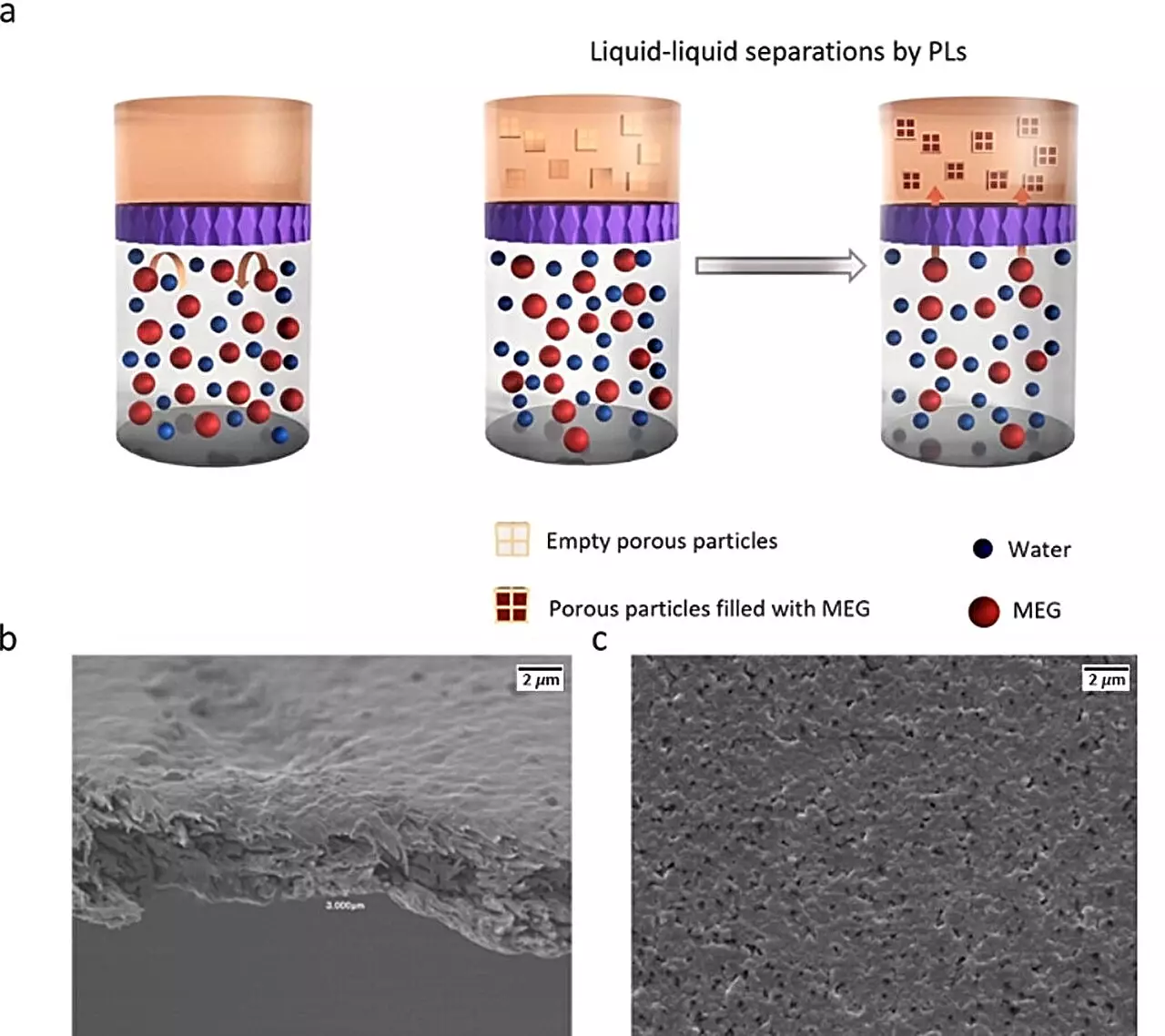In a groundbreaking development, researchers from the University of Birmingham and Queen’s University Belfast have pioneered the use of porous liquids (PLs) for the first-ever liquid-liquid separation process. This innovative approach holds significant implications for environmental sustainability and public health, addressing pressing challenges faced in various industries. The study recently published in *Angewandte Chemie International Edition* marks a pivotal moment in chemical engineering and offers promising solutions to long-standing problems, especially in sectors like aeronautics and beverages.
The research initially aimed to tackle the environmental drawbacks associated with monoethylene glycol (MEG), a prevalent de-icing agent in the aeronautical sector. The mixture of MEG and water poses severe risks as it leads to harmful ecological run-offs, jeopardizing aquatic ecosystems. The team’s innovative use of Type 3 porous liquids effectively captures and isolates MEG from water mixtures, achieving an impressive absorption rate of up to 88% of the PL’s pore volume. This method not only facilitates safer waste disposal but also presents a functional alternative to current practices that involve storing harmful waste indefinitely.
Beyond its implications for environmental management, the application of porous liquids opens new avenues in the beverage industry. The ability of non-toxic and pH-resistant PLs to lower alcohol levels in products like wine and gin presents a novel alternative in response to growing consumer demand for low-alcohol options. Unlike many current low- or no-alcohol beverages, which often compromise on flavor, this new extraction method aims to retain the sensory characteristics that consumers cherish. This breakthrough could signal a substantial shift in how producers approach beverage formulation, allowing for products that cater to health-conscious consumers without sacrificing quality.
Assistant Professor Deborah Crawford articulated the broader implications of this discovery, emphasizing its transformative potential. Originating over a decade ago with Professor Stuart James at Queen’s University, the concept of porous liquids has now been successfully applied in a practical context to achieve liquid-liquid extraction. This not only reflects an advanced understanding of material science but also suggests a pathway for future innovation in various sectors. The research team’s exploration into the application of porous liquids sets the stage for expanding their potential use beyond just two industries, inviting further investigations into their capability in fields like pharmaceuticals or waste management.
As the world grapples with environmental challenges and shifting consumer preferences, the implementation of porous liquids for liquid-liquid separation emerges as a promising solution. This research exemplifies how scientific advancements can pave the way for sustainable practices and healthier products. The ongoing exploration of porous liquids is not just a technological enhancement; it represents a forward-thinking approach that aligns industrial practices with ecological responsibility, promising a brighter future for both consumers and the environment.


Leave a Reply